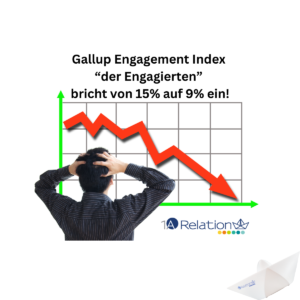In today’s everyday marketing life, the personal and individual approach is a must. Nevertheless, Gartner questions this on the basis of a study.
The discussion about personalization with three different opinions:
Gartner writes in its article that by 2025, companies will abandon personalization due to the lack of ROI and an increasing flood of data regulation.
The reasons Gartner cites from their study are the decline in customer trust, the increased scrutiny by government agencies, and the barriers erected by technology companies.
Scott Brinker reacted to this article as follows:
Personalization isn’t dead, but consumers need more control
In response to Gartner’s predictions, Scott Brinker explains that personalization is far from dead, so you shouldn’t throw the baby (here: personalization) out with the bathwater. Scott goes on to argue that personalization and customization can still add value to the customer experience.
Scott acknowledges that this requires a change for many marketers and, in some cases, greater respect for consumer privacy. However, he rejects the argument that personalization is both costly and incompatible with privacy.
According to Brinker, government agency controls are the right way to lay good groundwork for personalization.
Scott further argues that the platform model (CDP or IPaaS) connects data silos and martech while a management system controls the whole thing.
Georg Blum on the topic:
Unfortunately, we do not know who was surveyed by Gartner and how. Connoisseurs of market research methods know that you can also ask questions in such a way that a correspondingly desired result comes out. So we enjoy sucking out with critical reason.
I am sure of one thing: For 30 years, we have seen the positive levers of personalization and individualization. Experiences of mine as well as results of colleagues and studies speak a clear language. Between 10% and up to 30% more response or interaction triggers personalization and individualization.
Why is that? Digression.
Our brain reacts very sensitively to our name or personal address. We are happy about it. We are becoming more attentive and open (also for advertising messages). The other person seems to know or appreciate us. So we trust him more and more.
Certainly, personalization must be practiced. It doesn’t go clumsy. Through campaign tests or A/B tests in marketing automation, the user determines which variable pulls more strongly. Is it age, gender, last purchase date or product categories, to name just a few very obvious variables? Also anniversary of the 1st order, name day or birthday are information that exists for almost every interested party or customer. If you use this simple information to get started, you will quickly realize that it’s worth it.
In the next phase, I’ll call it Amazon personalization (customers who bought X also bought Y), the topic of customization will be taken to a new level. Examples that offers depend on the region or weather also showed success. With appropriate content such as suitable images, products or incentives, this is not rocket science. Only courage, that certainly works.
Those who do not test or test incorrectly will give up in frustration. But we want to encourage our readers not to let the topic be badly talked about by such doomsayers as Gartner or perhaps frustrated users.
There is far too much potential in it and with the AI club this will not work immediately. Therefore, start with simple ideas at the beginning and test, test, test.
Deutsche Post has also been able to gain some insights in a study with CMC.
Image Credit: Pixabay.com
Note: This is a machine translation. It is neither 100% complete nor 100% correct. We can therefore not guarantee the result.












